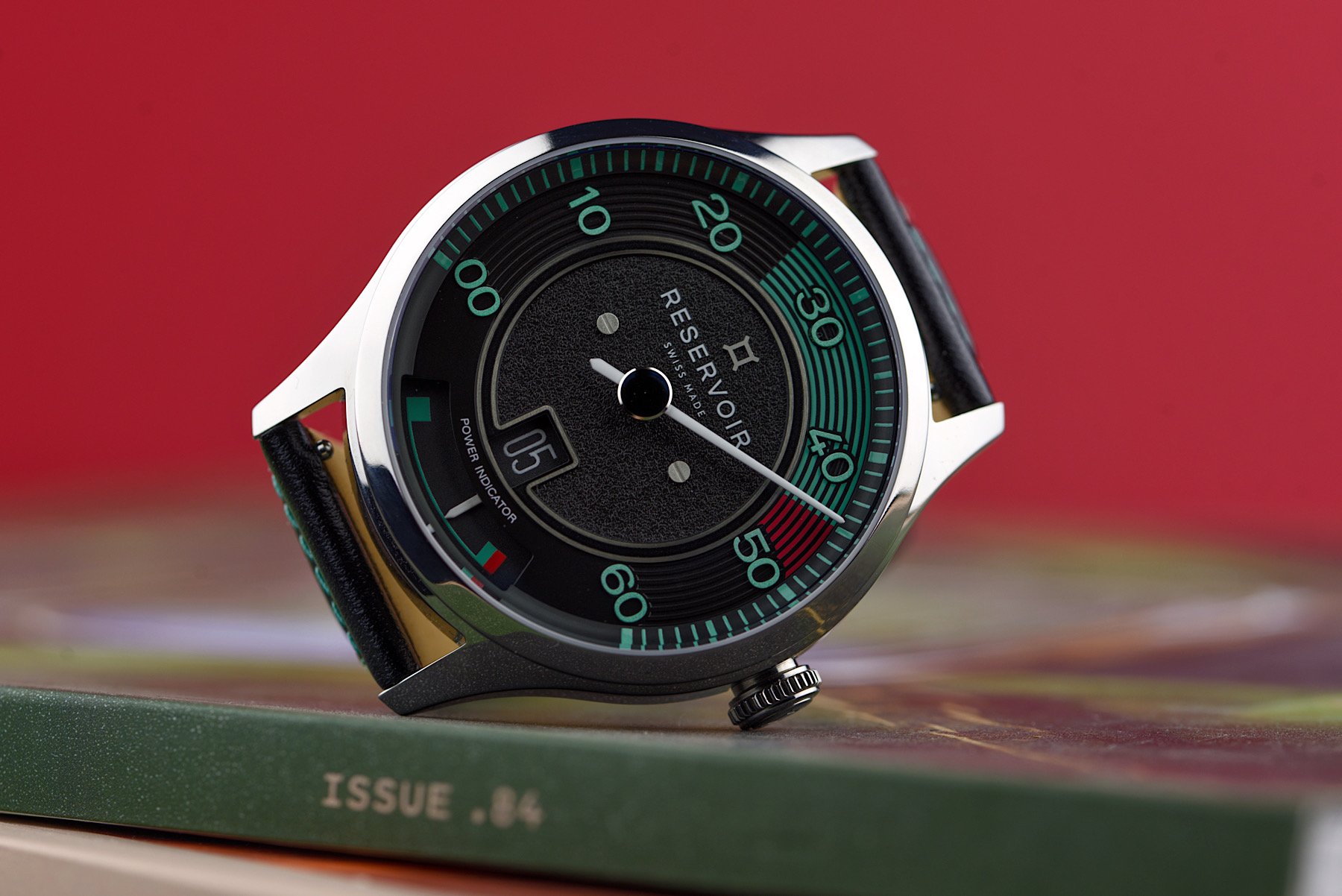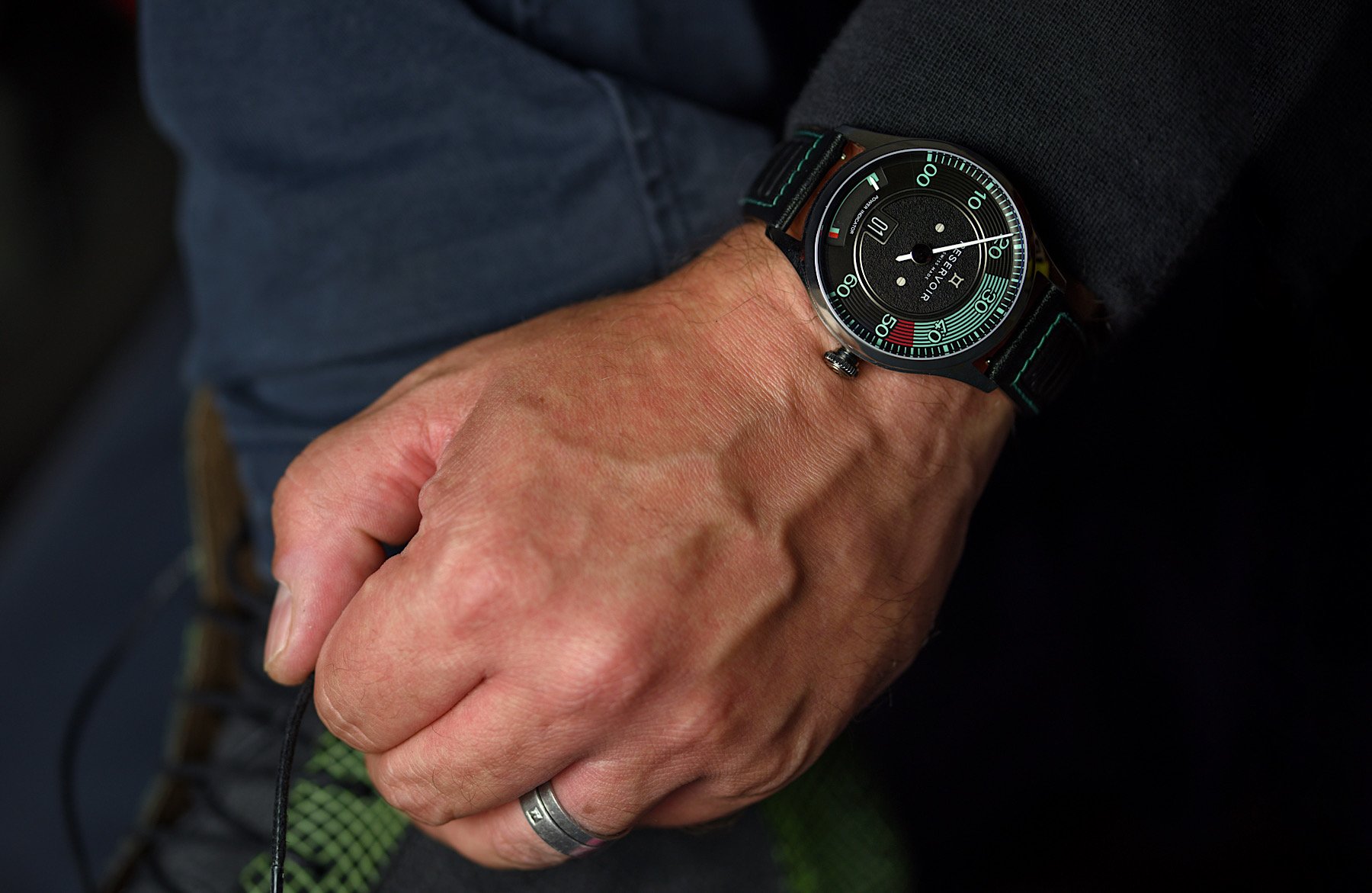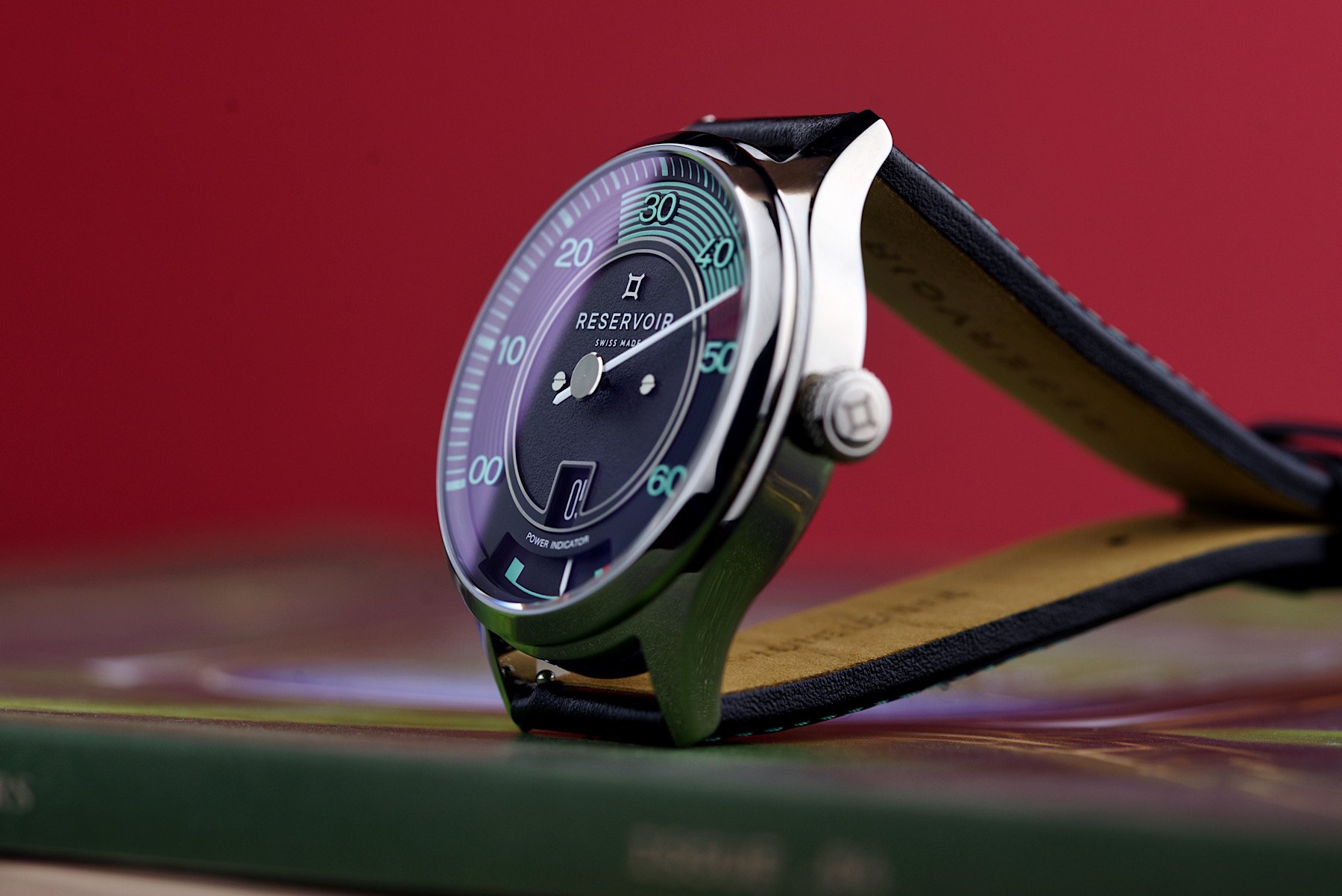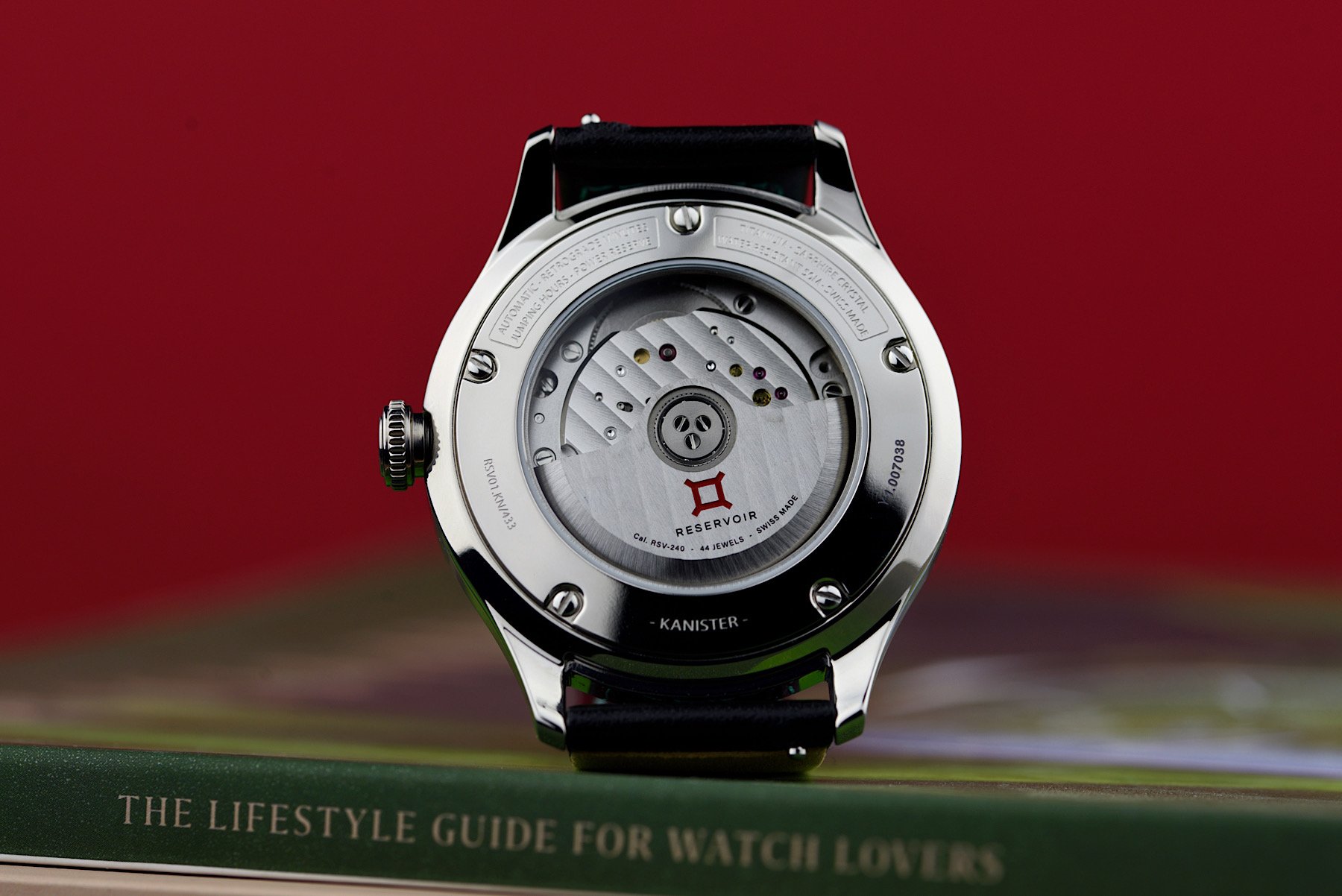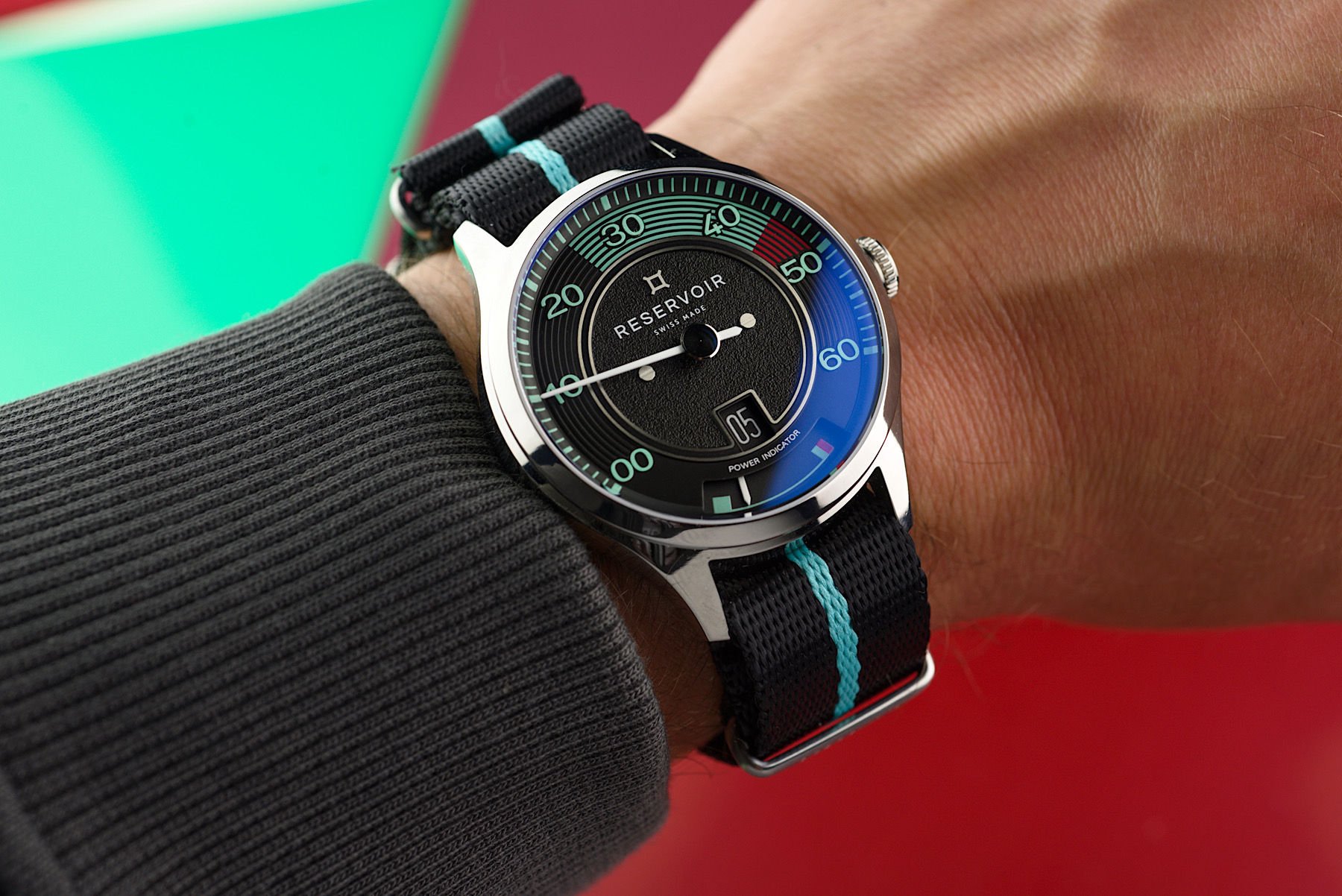Hands-On With The Reservoir Kanister Jump-Hour Watch
Cars and watches go together like spaghetti and meatballs. There is no shortage of racing-inspired watches, but aside from a chronograph with a tachymeter, the association has always seemed a little arbitrary to me. Maybe that’s because I’m not really a car guy. However, the visual connection between a dashboard register and an analog watch dial is an easy one to spot. Just take one glance at the Reservoir Kanister, and you’ll see exactly what I mean. The gradual demise of both has long been predicted in favor of digital displays, yet there is something undeniably charming about a physical needle arcing around a dial.
Legend has it that this is never truer than in the case of the Porsche 356 Speedster’s RPM counter and the watch I’m looking at today. The dial of the Reservoir Kanister is a close reworking of that original design, and even I can’t fail to notice the automotive undertones coursing through. One does not need to be a petrolhead to take a pretty good guess at the inspiration behind it. The 356 Speedster offers a perfect canvas for Reservoir to rework into a sleek jump-hour watch.
A dial true to its source
Seeing the Kanister and its Speedster inspiration, much of the dial design has already been laid out, ready for Reservoir to follow. The rev-counter surrogate spans the dial from the bottom left to the bottom right, graduated from 00 to 60 with mint-green markers. The additional splash of color from the redline area perhaps doesn’t make as much sense on a jump-hour watch unless the design strayed slightly from the source material and instead used it as a visual indication that it was nearly time to jump. Individual minute markers on the Kanister’s chapter ring appear between the large Arabic numerals counting in multiples of 10. The white needle-shaped minute hand is the only one that appears centrally on the dial and is capped with a large circular-brushed cover.
Two other pieces of information are displayed on the Kanister’s dial. First and most important is the hour disc. This snaps forward just as the retrograde minute hand snaps back to 00. Second, the bottom of the dial features a power reserve indicator in the form of a fuel gauge. Now, not everyone loves to see a power reserve gauge on an automatic watch, as evidenced here. Still, it seems that we can find an acceptable middle ground when it becomes an important design element. In the case of the Kanister, the power reserve display fills an otherwise blank space on the dial. It’s also consistent with the overall theme. My only grumble is with the red area on it. I believe it might make more sense at the “empty” end of the register rather than the “full” end.
Logical legibility
Due to the separation of the hour and minute displays, readability on the Kanister is excellent. The lack of lume on a sporty watch might be a dealbreaker for some. Still, with only one hour on the disc seeing the light at any time, there isn’t a sufficient opportunity to charge up luminescent material and make any lume application anywhere on the watch worthwhile. On a positive note, the AR coating is excellent, with a slight blue tint present. The minutes are easily readable at the most acute of angles. Furthermore, the proximity of the dial to the crystal and the gently sloping chapter ring offer a real sense of flatness.
A case that’s easy to live with
The automotive-inspired dial sits in a 41.5mm titanium case. I tried out a Reservoir model from its original series of jump-hour watches in the late 2010s. As much as I was a fan of both the design and function, I was left lamenting that the 43mm diameter of those earlier models was pushing the limits of what my wrists could comfortably handle. This more petite silhouette feels much more at home on my 17.5cm (~7″) wrist, and the 50mm lug-to-lug span is manageable too.
The polished case features soft and flowing lines rather than crisp edges. This possibly focuses the eyes on the dial rather than the case as much as possible. Admittedly, the presence of a screw-down crown is slightly incongruent with the meager 5-bar water resistance rating. It also sits a little apart from the case when entirely screwed down. This consistently fooled me into forgetting that I couldn’t instantly give it a quick wind when I saw the power reserve drop below half a tank.
The secret behind the Kanister’s jump
On the case back, the automatic caliber RSV-240 is visible through a sapphire crystal. Surrounding this i plenty of information that my eyes struggle to read etched into the polished titanium. The movement is finished with Côtes de Genève but is otherwise unassuming. The real ingenuity is hidden out of site in the form of a piggyback module sitting on top of the La Joux-Perret G100 base and beneath the dial. This patented 113-piece module converts the usual hour and minute wheels’ functions into a jump-hour display with retrograde minutes.
During my time with the Reservoir Kanister, I mostly wore it on a padded leather strap with turquoise stitching. Technically, this strap is sold separately, but the stitching wonderfully complements the dial. Included in the large display box that Reservoir sent me were two other straps. One was the stock leather strap with more muted black stitching, and the other was a black and turquoise nylon NATO-style strap that also comes with the watch. As comfortable as any watch becomes on a nylon strap, the polished case looks much more at home with one of the leather options. All these straps are fitted with quick-release spring bars or, in the case of the nylon strap, a loose pair of quick-release bars.
Living with the complications
Part of the attraction of a jump-hour watch is the mechanism to tell time in a different and exciting way. Coupling that digital hour display with a retrograde minute hand has positive and negative implications. On the plus side, it eliminates any temporary difficulty in reading the time. To expand, a traditional minute hand traveling 360 degrees could be pointing straight up to either 60 or 0. But you can’t be entirely sure of the time without knowing whether the hour has just jumped or is about to. With retrograde minutes, the wearer gets extra confidence in reading the two together.
The negative is that although the minute hand still travels clockwise, it takes a while for the wearer (or, at least, me) to register that half past an hour is when it points directly up rather than down. Similarly, a hand pointing to the right does not mean a quarter past. Instead, it means it’s almost time for the next jump on the hour. I often find some dial markings redundant. Here, though, the minute hand needs to be read in conjunction with the dial markers until you get used to the span and orientation of the minute register.
Concluding thoughts
While I often view interesting complications like these as offering something different within a collection, this watch will take some regular wear to get used to telling the time at a glance. It is easier to evaluate how successfully the Kanister has adopted its Speedster 356 inspiration and expanded the theme. The hour aperture and power reserve indicator are additions in keeping with the design rather than blemishes or afterthoughts. It’s tough to see how Reservoir could have done better in design. The jumping hour and retrograde minutes will likely entice and repel in equal measure. These are two complications that don’t introduce any new functionality but instead switch the primary time-telling displays around. However, getting used to the minute hand’s position is a struggle that I’d be willing to bear.
The Reservoir Kanister has a retail price of €4,500. For more information and to see the full brand’s full lineup, head to Reservoir-watch.com.

